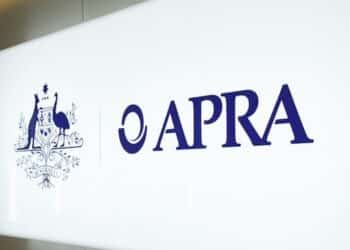Last month, the government released a proposals paper for a new ASIC funding model, which shows the advice sector will be levied $24 million to refund the regulator, or $960 per financial adviser per year.
In an email yesterday, the LICG urged advisers to write to Treasury and warn that this extra cost will ultimately be borne by clients.
“This is a further and unreasonable impost on small business owners who are already coping with increased compliance, employment, educational costs [as well as] professional indemnity insurance and the significant impact of LIF reforms,” the LICG said.
“The cost will have to be passed on to the consumer – once again making advice more expensive. Large institutions will barely be impacted whilst small business owners and advisers will be directly impacted.”
The LICG also argued that this levy will essentially be penalising small licensees for the behavior of larger institutions.
“ASIC has consistently stated that financial advice should be made more accessible to consumers,” the LICG said.
“The increased costs being proposed will have the opposite effect.”
The Governance Institute of Australia also released a statement yesterday arguing that the model is not likely to encourage good conduct as it punishes the wrong entities.
According to the proposals paper, ASIC will charge publicly listed companies a levy that is based on their market capitalisation, as it reflects “the quantum of potential investor harm from any misconduct”.
However, the Governance Institute believes this will only lead to well-behaving companies subsidising those that exhibit poor behaviour.
“Because it is predicted on size alone, with no risk-weighting attached to the market capitalisation metric, the proposed model inevitably means that listed entities that have little interaction with ASIC will face significant levies based purely on their capacity to pay,” said Governance Institute chief executive Steven Burrell.
“If we want to encourage and reward good corporate behaviour, costs should be borne by those creating the need for regulatory oversight and activity.
“Unfortunately, this is not the case with the proposed funding model, which does not take into account that higher market capitalisation companies are generally better resourced and have strong governance, risk and compliance frameworks. In fact, smaller cap companies can take up more regulatory focus, time and attention than their big-end-of-town cousins.”




What next the life companies charging us to write business for them?
Kelly O’Dwyer – Minister for Banks and FSC, strikes another blow against the small business independent advisers.
O’Dwyer is a disaster for the IFA’s and so deep in the banks / NAB pocket it is just too obvious.
No wonder the Australain general community and small business have the lowest opinion of politicians since it was first ever measured in 1969.
O’Dwyer, you and all your cronie politician and bank institution friends really STINK !!!!!
Once again the banks can absorb the costs of penalties that their poor behaviour primarily brought about. It is an irony that the non-bank, non aligned sector advisers who have the best record of looking after their clients will suffer the damage caused by changes such as these; whereas the culprit corporate sector will hardly feel it. The more the banks do the wrong thing, the more the regulator punishes the only competition to the banks. It is not right, and the only organisation that has brought this to the advisers attention and is actually doing something about this is once again the LICG. Where are the AFA and FPA, probably right now enjoying Christmas lunch shouted by the FSC!
If you are interested in joining a new association, one with a tireless record of standing up for advisers, then send your thoughts to action@licg.com.au
I don’t really see a problem with this. It’s $1000 per year per adviser. It’s not going to break the bank for anyone who is focused and productive in the world of advice.
What it is going to do is add yet another barrier accountants or mortgage brokers who like to dabble in an area where it’s easy to destroy retirement outcomes and create misery in the event of a health crisis.
The entire argument about ASIC being permitted to levy/tax the industry is a nonsense. ASIC, like all Govt Departments, should be only able to raise funds for operating costs from the Govt Budget. Allowing all and sundry governmental entities to effectively raise taxes at their whim is not what the Commonwealth is all about.
While not denying or condoning the behaviour of the banks, the banks have the capacity to make good customer loss and the banks are not the only licensees whose representatives are found to have done wrong. So effectively, the non-bank sector who do the right thing are being punished by those within the same sector who do not.